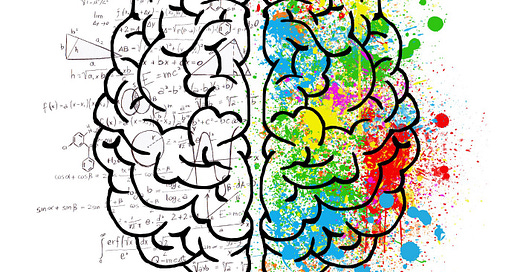Many people have dealt with the concept of creativity and tried to provide a definition. Among them, Margaret Boden, who is Research Professor of Cognitive Science at the University of Sussex, has played an important role. Her research interests revolve around AI and the complexity of the human mind, touching also the fields of psychology, philosophy, and computer science. In 2016, she has become an advisor to the Leverhulme Centre for the Future of Intelligence, an interdisciplinary community of researchers, technologists and policy makers working together in order to help guide the future of AI and study its implications.
When asked if AI can be a way of “unleashing creativity, or a way of enabling us to understand human creativity” [1], Boden explained that creative processes are still unclear, but AI and computational technology can help us understand more about the different kinds of human creativity. The Professor, who identifies three forms of creativity [2], stresses also the importance for humans and machine to work side by side to investigate both human and machine creativity. She truly believes that interdisciplinary is key to understand AI, “because the brain itself is a bundle of interdependent elements which support thinking and behavior that’s describable on many different levels.” Creativity and aesthetics, thinking and behaving, “they all in the end boil down to questions about information processing, and that’s why they are all so closely linked.”
Over time, in the arts, AI has shown to be disruptive and pushed further the boundaries of creativity. Thus two communities were formed that approach creativity in a different and almost opposite way.
The first is the community of artists and creatives who use Artificial Intelligence to build tools with the goal of augmenting and expanding human creativity. Known as Creative AI, this community works in an anthropocentric way, using technology in favor of human creativity and focusing on the product of the interaction between human and machine. Some scholars, such as Simon Colton, Professor of Computational Creativity, AI and Games at Queen Mary University of London, prefer to call it AI for creatives, as the concept of a machine potentially creative is fully rejected.
The second is the community which belongs to the academic field of Computational Creativity, described as a multidisciplinary endeavour that is located at the intersection of the fields of artificial intelligence, cognitive psychology, philosophy, and the arts [3]. This community enriches the investigation of AI with philosophical notes, looking at both human and machine creativity, finding ways to automate the creative process, and supporting the idea that software, in the future, could be creative in its own right.
While it is desirable that these two sectors may one day work together in a more organic and multidisciplinary collaboration, even now we can find some examples of artists interested in exploring these issues by weaving them into their work.
I hope this short reading has stimulated your curiosity, so continue to follow AI + Art and we'll be in touch soon!
References and Resources
[1] https://www.ibm.com/watson/advantage-reports/future-of-artificial-intelligence/margaret-boden.html
[2] https://www.interaliamag.org/articles/margaret-boden-creativity-in-a-nutshell
[3] https://computationalcreativity.net/home/about/computational-creativity/
[4] https://medium.com/the-ai-art-corner/can-ai-enhance-human-creativity-4a68aaa5a686
Except where otherwise noted this work is licensed under a Creative Commons Attribution-ShareAlike 4.0 International License.





